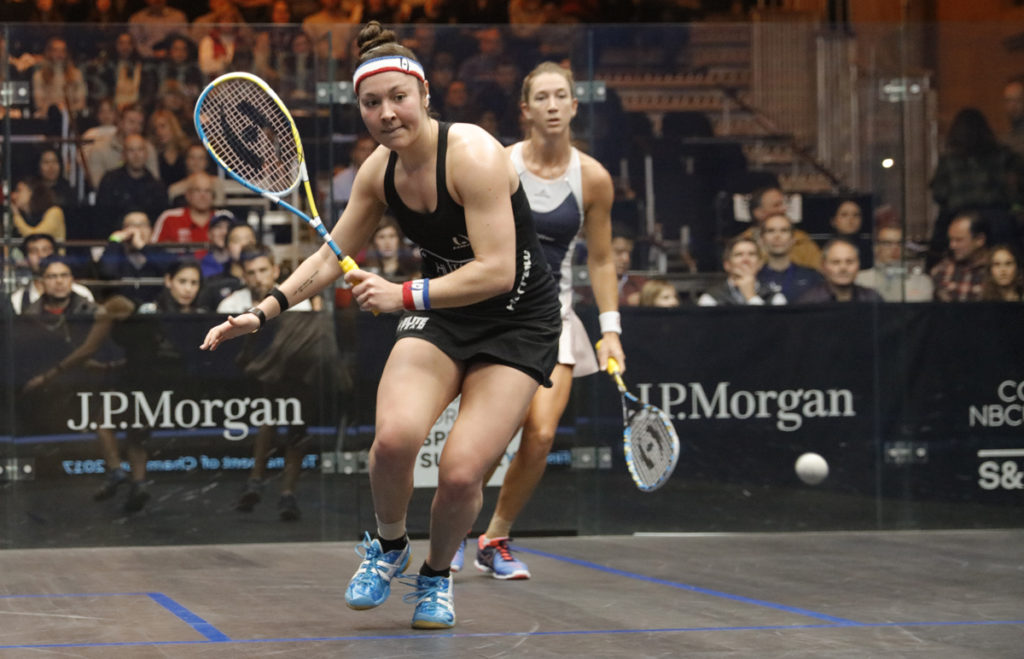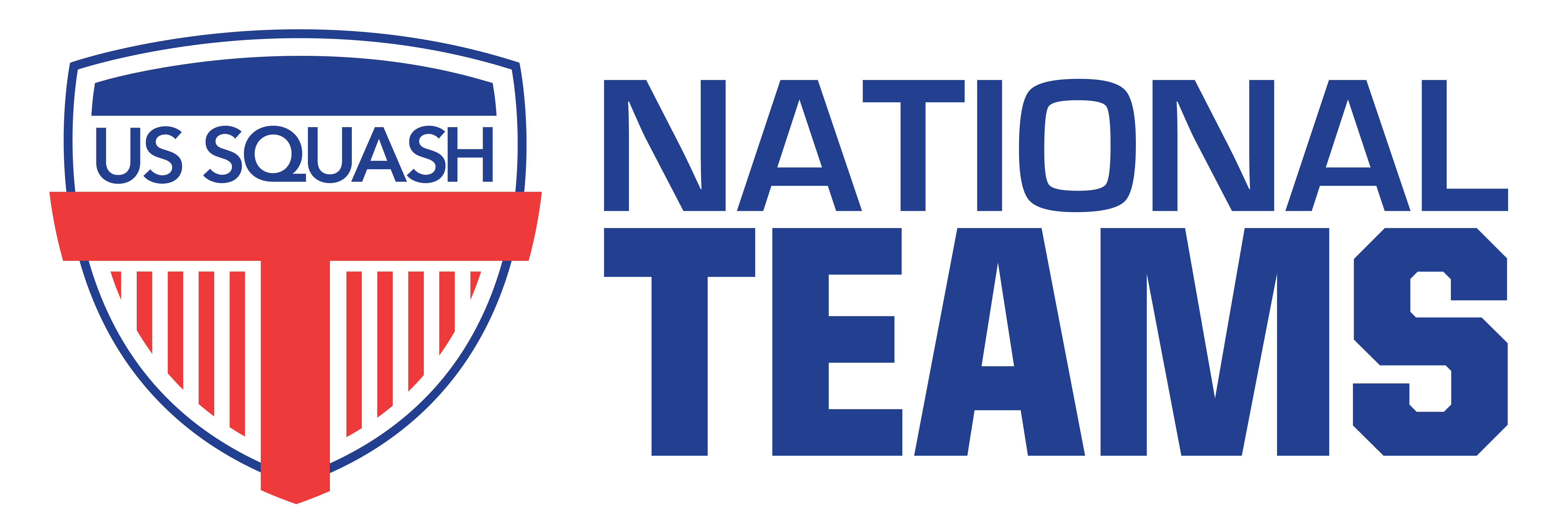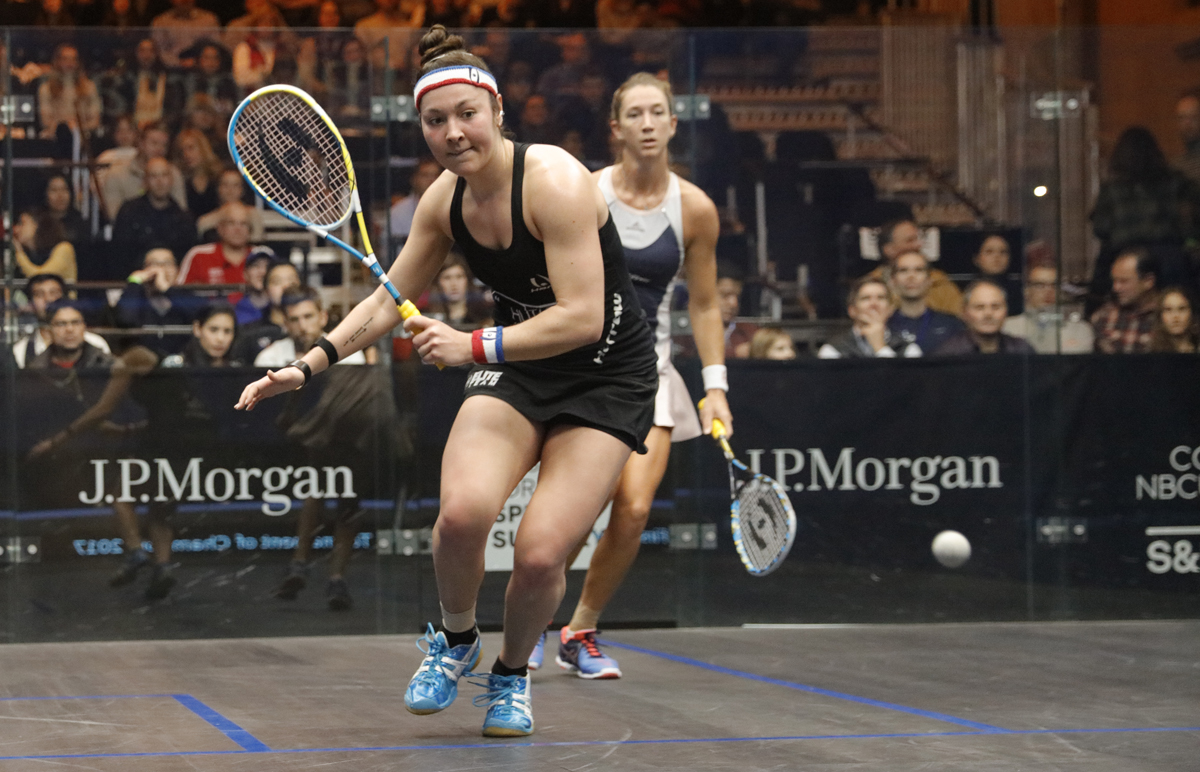
by Amanda Sobhy
On March 10, I tore my left Achilles tendon. I am a professional squash player and, as for any athlete, an injury like this is devastating. To make matters worse, I ruptured it in Colombia—yes, the country.
I was competing in the semifinal match of the Ciudad de Floridablanca Open in Floridablanca. I can remember the moment so clearly. It happened shortly after I could have won the match at 10–3 on a backhand drop, but clipped the top of the tin instead. On the two points after that, I lost my focus and decided to aimlessly hit the ball around the court instead of strategically placing it. I hit a backhand drive that clipped the sidewall at 10–5 instead of dying in the back of the court, which would have won the match for me and taken me to the finals.
It was on the following shot, at 10–5 match ball to me, after my opponent, Olivia Blatchford—or Liv, who is also my U.S. teammate—hit a drop shot in the front right corner when it happened. I stepped back with my left foot to push off and fell straight down. I thought Liv had tripped me or kicked me in the back of my calf, because that’s what it felt like. Lying on the ground, I turned around and asked her, “Did you hit me?” When she replied no, I knew exactly what happened. I had snapped my Achilles.
“Oh no. Oh no,” I said to Liv. “I just popped my Achilles.”
Thinking about this moment now, and hearing again my voice say those words, still makes me emotional. It was the complete shock and realization that I snapped my Achilles that shook me the most. I just laid on the floor of the court, crying—crying because I was in pain, but also crying because I was in absolute shock.
I couldn’t believe what I knew had happened. So many thoughts were racing through my mind: I was finally playing well after struggling with an injury in my right foot for the last few months. I actually felt I could have won the tournament. I was the No. 1 seed and, had I won, it would have been my biggest tournament title to date, possibly catapulting me into the top five in the world rankings on the professional squash tour. That was one of my goals and I soon realized that it was never going to come true, not this season.
While I was lying face down on the court in tears, the medic on site came over to look at my foot. I couldn’t turn over. I couldn’t even move. I was paralyzed in shock and in pain. I had to concede the match, at match point, and get carried off the court in a stretcher.
The court was in a spectacular setting, in a glass court high on top of a mountain. There were two ways to get to the top of that mountain: either by an eight-minute gondola ride or by driving up and down the bumpiest, windiest, dirt mountain road. The ambulance headed down the mountain on the tiny dirt road with two medics in the ambulance, neither of whom spoke English well. I felt every single bump and turn we hit, clutching the handle of the stretcher and the side of the ambulance for dear life, trying not to panic anymore than I was. Normally, the ride takes 15 minutes to get down the mountain—that night it took us an hour.
Imagine lying in an ambulance, in a foreign country, unable to move, trying to process the fact that you are going to be immobile for the next nine months. I was scheduled to compete in tournaments in England, Dubai and Egypt within the following two months, but I was out. I was done. This was my job. My passion. It’s what I train for every single day. What gets me out of bed every morning. And now I can’t do it. In an instant it’s gone. I pushed off to retrieve a drop shot and tore my Achilles. I’m out for the next nine months.
Now I have to make the best of this situation. Time to regroup.
Amanda Sobhy will be documenting her recovery process first-hand on www.excellesports.com.
On March 17, Sobhy underwent a successful surgery to repair her Achilles.



